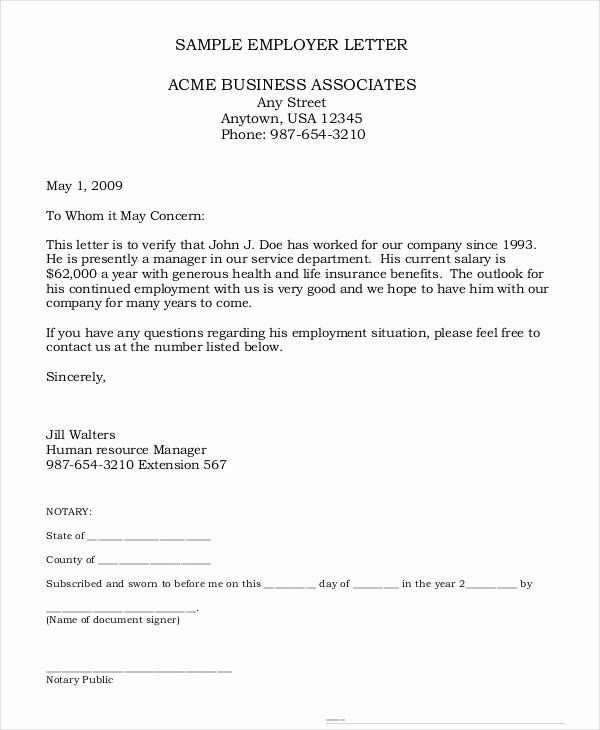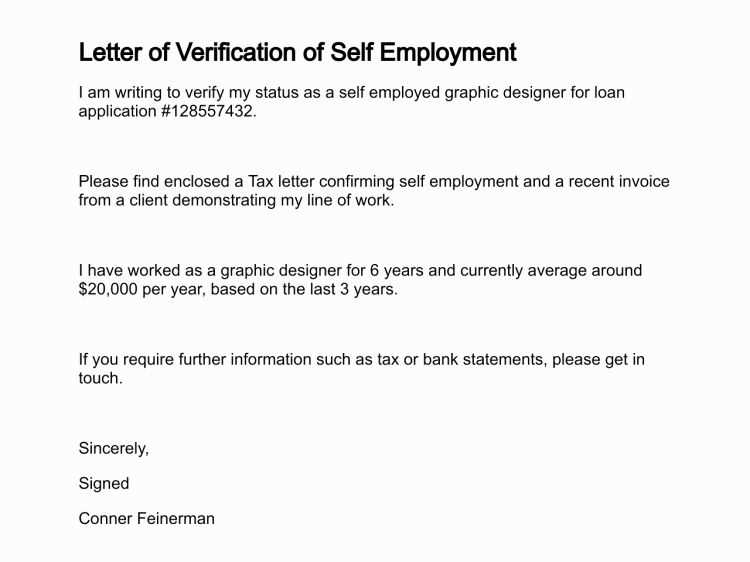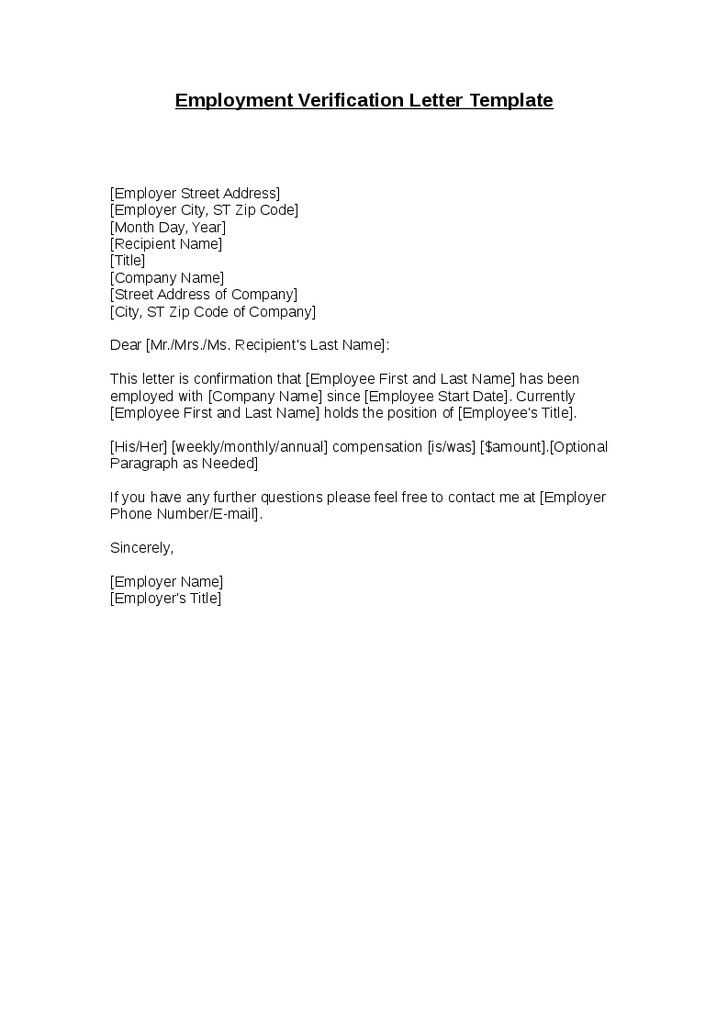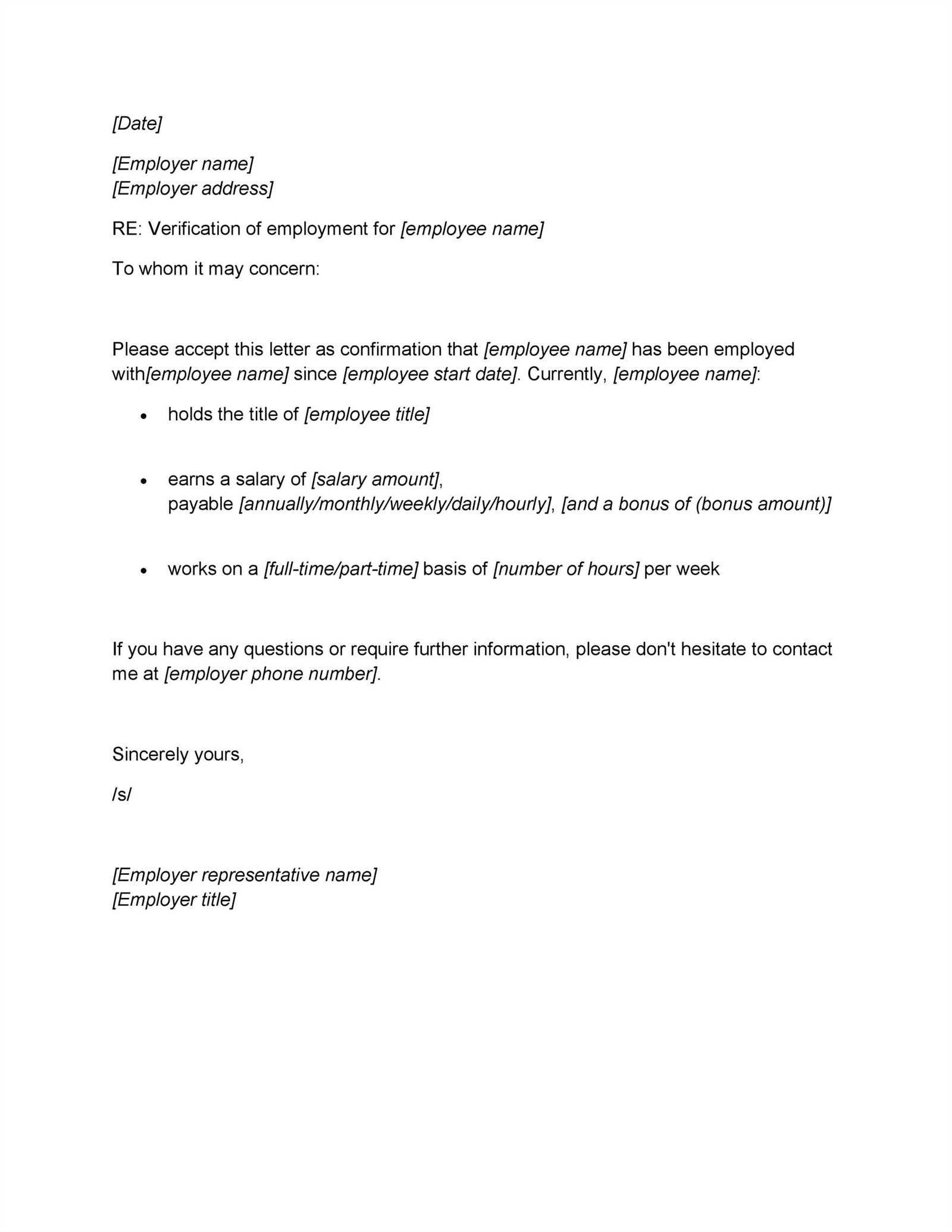Employment Verification Letter Template for Employers

When confirming someone’s work history or position within a company, employers often rely on structured documents that validate key information about an individual’s professional background. These documents play a crucial role in both personal and professional settings, especially when verifying the details required by third parties such as banks or rental agencies.
Having a standardized format ensures consistency and professionalism, allowing for quick adaptation across different situations. It can provide clarity on important aspects such as job title, employment dates, and salary, which are essential for various administrative processes.
Employers and employees alike can benefit from easy-to-use formats that streamline the process, saving time and reducing the risk of errors. These forms are simple yet essential tools that contribute to smoother interactions when verifying career-related details.
Understanding Employment Verification Documents

When a person needs to prove their job history or current role, a formal confirmation from their employer can be requested. These documents serve to validate essential work-related information, offering assurance to third parties such as financial institutions, housing agencies, or potential employers.
Such confirmations often include crucial details that are required for background checks or specific applications. The information typically included is:
- Job title
- Dates of employment
- Salary or compensation details
- Responsibilities and duties performed
These written records serve as proof of one’s professional involvement and can help facilitate various processes, such as securing loans, renting properties, or applying for new positions. Employers usually provide these documents upon request, but they must adhere to specific standards to ensure that the data is presented clearly and accurately.
Understanding how to create and utilize these documents properly is essential, as it can affect both the requester’s and the recipient’s credibility. Properly structured and precise statements reduce the risk of misunderstandings or disputes in the future.
Why Templates Are Useful for Employers
Having a predefined format for confirming an individual’s work details streamlines the process for businesses. It helps ensure that important information is communicated consistently, reducing the chance of errors or omissions. By using a ready-made structure, employers save valuable time and effort that would otherwise go into drafting a new document for each request.
These ready-to-use structures provide clarity and professionalism, allowing businesses to respond quickly to inquiries. With a standard format, employers can be confident that they are providing the necessary information in a precise and organized manner. This consistency not only enhances the company’s reputation but also facilitates smoother communication with external parties.
Additionally, these documents can be easily customized to meet specific needs. Employers can adjust the content based on what’s required, without compromising the essential details. Using a framework helps minimize mistakes and ensures that both employers and employees benefit from a hassle-free experience when confirming job-related facts.
Essential Information to Include in a Confirmation Document
When creating a document to confirm an individual’s work details, it’s important to include specific data that can effectively validate their professional background. The content should be clear, precise, and focused on key facts that third parties may need to verify.
Here are the essential details that should be included:
- Full name of the employee
- Job title or position held
- Dates of employment, including start and end dates
- Work schedule, such as full-time or part-time status
- Salary or compensation details, if necessary
- Brief description of job responsibilities or key duties
Including these critical components ensures that the document serves its intended purpose and provides the necessary proof of employment or professional history. The information should be presented in a straightforward and formal manner, helping to maintain the document’s credibility and accuracy.
How to Modify a Template for Your Needs
Customizing a pre-structured document allows you to tailor the content to fit specific situations, ensuring that all required information is included while reflecting your company’s style. It’s essential to adapt the format according to the particular details requested by the third party or the purpose of the document.
Steps to Personalize Your Document
To adjust a general structure for your specific requirements, consider these important modifications:
| Element | What to Modify |
|---|---|
| Employee Name | Insert the full legal name of the individual. |
| Job Title | Update with the employee’s current or past job title. |
| Dates of Service | Ensure the start and end dates are accurate, or specify if currently employed. |
| Salary Details | Only include salary if requested or necessary for the purpose of the document. |
| Job Description | Include a brief description of the employee’s main responsibilities. |
Adjusting Tone and Details
The tone and level of detail should align with the purpose of the document. For example, if the document is being used for a mortgage application, you may want to be more formal and specific about compensation details. On the other hand, for rental purposes, a simpler outline of job title and dates of employment may suffice.
Avoiding Errors in Confirmation Documents
When creating a document to validate someone’s job history, it’s important to be precise and accurate to avoid misunderstandings. Even small mistakes can have serious consequences, especially if the document is being used for critical applications, such as securing loans or renting properties. Ensuring accuracy from the start can save time and prevent complications later.
Common Mistakes to Avoid

Here are several errors to watch out for when preparing the document:
- Incorrect spelling of the employee’s name
- Providing inaccurate job titles or responsibilities
- Failure to include specific employment dates
- Listing outdated or incorrect salary information
- Leaving out important details like work schedule or position status
Double-Checking Information
Before finalizing the document, it’s crucial to review all the details for accuracy. Confirming the data with the employee and cross-referencing with official records can help ensure that nothing is overlooked. Even minor discrepancies can cause issues, so it’s always best to double-check everything.
Tips for Creating a Professional Document
When preparing a formal confirmation of an individual’s work status, maintaining a professional tone and structure is key to ensuring that the document is both credible and effective. A well-crafted document not only reflects positively on the company but also facilitates the recipient’s understanding of the employee’s background. Following a few simple guidelines can greatly improve the quality and impact of the document.
Maintaining Clarity and Precision
Be clear and direct in presenting the information. Avoid unnecessary details or overly complex language. Stick to the facts and ensure the document communicates essential details in a straightforward manner.
- Use formal language appropriate for professional communication.
- Avoid ambiguity by being specific about dates, job titles, and responsibilities.
- Keep sentences concise to avoid confusion.
Formatting for Readability

Proper formatting is crucial to making the document easy to read and professional. Organize the content logically and use bullet points or numbered lists to highlight key information when necessary. A clean layout with sufficient white space makes the document look more polished and helps ensure the reader can quickly locate relevant details.